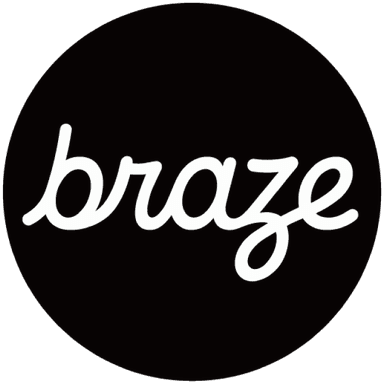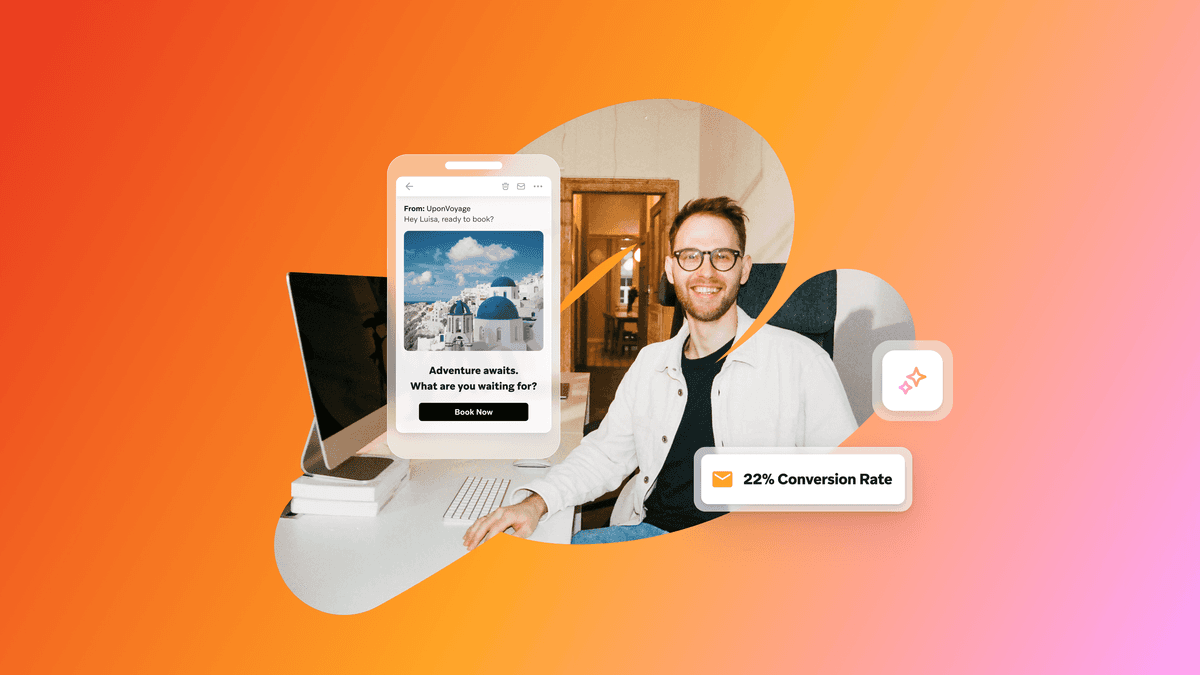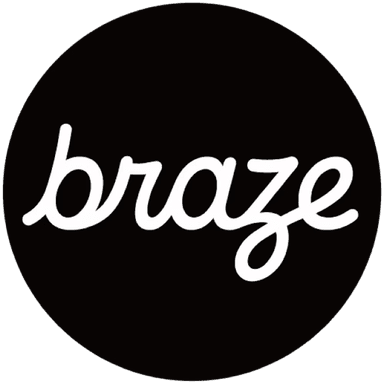What is cross-channel marketing and why does it matter to your business?
Published on April 15, 2025/Last edited on April 15, 2025/17 min read


Team Braze
Cross-channel marketing is a key differentiator for high-performing brands. Done well, it significantly increases sales, loyalty, and customer lifetime value.
If you’re not using it yet, this guide is for you. You’ll learn:
- Exactly what cross-channel marketing is—including how it differs from multi- and omnichannel
- The bottom-line benefits of a cross-channel strategy messaging over single-channel
- The state of cross-channel messaging and how high performers use it
- Different channels available to you and how to use them effectively
- Key components of a cross-channel strategy
- Technology to make cross-channel easy
- FAQs
What is cross-channel marketing?
Cross-channel engagement is using the right mix of channels to reach your customers in a way that delivers value to each individual. It’s about being intentional about the channels you choose and how you use them, so you can:
- Create a seamless experience across different channels
- Reach customers relevant content they respond best to
- Use the strengths of individual channels to optimize engagement rates
With an effective cross-channel strategy—powered by streaming data—brands can reach customers via their preferred messaging channels at a time they’re most likely to engage, with messages relevant to where they are in the customer journey.
The impact of landing on the ideal mix of channels can not only be powerful, it can be transformative. For example, instead of an eCommerce brand simply emailing customers with offers, a cross-channel strategy could see them use:
- Push notifications and social ads to win back lapsed app users
- In-app messages with personalized recommendations that drive new sales
- SMS to promote a flash sale
- An email with a year-in-review that reminds the customer why they love the brand
A cohesive, strategic cross-channel engagement can acquire more customers, drive more revenue, and increase retention compared to a a single-channel or disjointed approach. Read on to learn how.
How does cross-channel marketing differ from single-, multi-, and omni-channel?
To understand cross-channel marketing, it’s important to understand how it differs from other approaches. If you’ve spent any time in the marketing world in recent years, you’ve likely heard terms like “multi-channel,” “omni-channel,” and “cross-channel” used pretty interchangeably. But they’re not always referring the same thing.
- Single-Channel Engagement: This approach uses a single channel to reach customers. Few brands use a single channel these days—only 17% according to 2024 Global Customer Engagement Review—but it's better than not messaging your customers at all.
- Multi-Channel Engagement: This approach uses multiple messaging channels to reach users, but they’re typically siloed and lack a seamless strategy.
- Cross-Channel Engagement: This approach is focused on using the ideal mix of channels to reach customers in a complementary, cohesive way
- Omni-Channel Engagement: This approach typically refers to using both digital and in-person channels. It is often used aspirationally to articulate a vision of communicating with consumers across every available channel
Why cross-channel marketing matters for your business
Our research shows that a cross-channel strategy can improve brands’ acquisition, monetization, and retention goals. We analyzed aggregate Braze data from over 9 billion global users as part of 2024 Global Customer Engagement Review to measure the effects of messaging customers on a variety of channels.
Our analysis found that messaging users on a combination of in-product and out-of-product channels can result in 25% more purchases per user than using just out-of-product channels and 6.5X more purchases per user than using just in-product channels.

We also found that brands who utilize email, in-app messages, mobile push, and web push in concert can achieve an 126X higher average sessions per user compared to those who only received in-app messages. This highlights the effectiveness of a multi-channel approach in driving user interactions.
Furthermore, our research showed that customers who receive brand messages on WhatsApp can see 70% longer user lifetimes than those contacted through other channels. This dynamic is even more pronounced with email, which leads to an 81% increase in user lifetimes, and Content Cards, which result in an 86% increase. These findings underscore the importance of leveraging multiple channels to create a cohesive and engaging customer experience, ultimately fostering greater user retention and loyalty.
Instead of picking one channel to connect with customers to keep them informed (single-channel), or
using a limited number of channels to address all customers (multi-channel), leading marketers strategically select and personalize their channel choices to optimize customer engagement (cross-channel).
To understand how cross-channel marketing could work in your business, let’s look at some of the key components of a cross-channel strategy next.
Key components of cross-channel marketing
Cross-channel marketing uses a range of messaging channels to reach your customers on the platforms they’re most likely to engage with and are most likely to support your specific goals. For example, it wouldn’t make sense to send an in-app message encouraging a lapsed customer to come back to your app—they’re just not going to see it. A push notification or even an email would make more sense.
Additionally, a good cross-channel strategy is fueled by real time data, so you can send messages that are timely, relevant, and value to who your customers are and where they are with your brand today.
Channels you should know
Ubiquitous and used by 45% of marketers, email is a great way to reach out to customers. Emails can contain detailed, well-designed content to drive people to your website and app. However, inboxes are crowded and people don’t check them every day. Assuming your email gets read, it’s best for less time-restricted content.

Push notifications (mobile and web)
Notifications pop up on users’ digital devices, making them a powerful way to grab people’s attention in the moment. They’re strong for time-critical messages and reaching customers even when they’re not engaged with your website or app. But they’re sometimes disabled if people find them intrusive.

SMS
SMS (Short Message Service) allows brands to communicate directly with customers via their mobile devices. It is an effective tool for customer engagement because it offers high open rates and the ability to send timely (urgent), personalized messages that can drive quick responses and enhance customer interaction.

Messaging apps (WhatsApp)
Messaging apps like WhatsApp are popular—47% of marketers who we surveyed said they were using or already planning to use them. Brands can use these apps to create dynamic, two-way messaging campaigns to drive customer engagement.

In-app messaging (IAM)
IAM delivers messages to people who are actively using your app. They’re great for pushing engaged users towards deeper engagement and conversions, such as offering promotions or soliciting user data to personalize their experience.

The benefit of combining channels into a cross-channel strategy
While all of the channels above are legitimate ways to engage your customers, you’ll notice they each have benefits and limitations. For example:
- Email can be great for designed content but can get lost in people’s inboxes
- SMS can be ideal for text-only time-sensitive messages but can feel intrusive if overused
- IAM reaches engaged users but not those that have lapsed
This is why a cross-channel approach is so valuable. It gives marketers a choice of different channels to use, to reach customers in the right way. And it can deliver results:
- Email + IAM + mobile and web push = 41.6X more sessions per user (compared to email alone)
- Mobile push + IAM + email + SMS = 88.3X more purchases per user (compared to push alone)
IAM + email + mobile and web push = 3.4X higher average user lifetime (compared to IAM alone)
For more insights into the marketing channels available to you and how to combine them for higher engagement, download Mix and Match: Supercharge Engagement, Monetization, and Retention with Cross-Channel Experiences
Data management for a cross-channel campaign management
An effective cross-channel strategy is based on good data practices. It’s important to have a tech stack based on streaming data—not static or batched data from siloed point solutions—to power personalization and real-time interactions. Some key data concepts in cross-channel engagement are:
- Live-streaming data: A live feed of data from every channel, that marketers can analyze and use to trigger messages based on customer behavior (like an abandoned cart notification before they lose interest)
- Cross-channel analytics: The ability to analyze data across every channel you’re using, to build a comprehensive picture of customer engagement across every touchpoint
- Predictive analytics: Trend insights that can forecast churn, likelihood to buy, and other key behaviors, letting you seize opportunities proactively before the moment has passed
- First-party and zero-party data: First-party data is data that a brand collects directly through a customer’s interactions and behavior, while zero-party data is intentionally shared by customers through surveys and quizzers.
With a thoughtful approach to collecting and using data, brands can more effectively connect with their customers and create long-term relationships. Without the ability to activate data in real time, it can be hard to effectively personalize messages, segment audiences, or run A/B tests.
The state of cross-channel marketing
Every year, Braze takes the pulse of the profession to understand what’s working best in customer engagement. Here’s what the 2024 Global Customer Engagement Review discovered.
Top marketers are using multiple traditional channels
Most marketers are engaging customers across multiple platforms. Our survey found many are using—or planning to use—a mix of established channels to reach customers more effectively.
- Email: 45%
- Mobile and web push: 43%
- Targeted app or web content: 41%
- In-app/in-browser messaging: 40%
But channel preferences are rapidly evolving
Messaging platforms like WhatsApp and Line overtaking email as marketers’ most-cited channels for customer communication. 47% of marketers are now including apps like WhatsApp, Line, and KakaoTalk in their engagement strategy.
It’s not hard to see reasons that might be influencing this change. For one thing, using WhatsApp can deliver a 70% longer user lifetime, while combining it with other channels can boost retention even higher (81% for WhatsApp and email, 86% for WhatsApp and email and Content Cards).
Engagement is stronger with the right channel mix
Our analysis found that combining in-app messages with mobile push notifications, email, and web push was associated with the strongest results for average sessions per user, a key engagement metric. This combo saw nearly 126X higher results, compared to individuals who received no messages.
However, it’s important to remember that there’s no one-size-fits-all – you need to find the ideal combination for your unique audiences and conversion goals.
Manual processes are holding back marketers’ efforts
While brands see stronger engagement metrics when using multiple channels, many marketers are still hampered by manual processes. Most lack the tools to deliver their cross-channel engagement ambitions. Only 30% have a dedicated customer engagement platform to automate and simplify the process. And 33% depend on multiple, siloed point solutions to manually piece together a multi-channel experience.
Marketers are concerned about consistency
Only half of respondents reported “sufficient consistency” in their messaging efforts, and just 37% said consistency in the customer experience was a top priority. This represents a major opportunity for brands to raise the bar and reap significant business benefits.
Tips for perfecting your cross-channel mix
1: Understand your customers
The first step in a successful cross-channel engagement strategy is to understand your customers. And the best way to do this is through your data. Your data will show you trends in how different customers engage with your brand across different channels and what they do on those platforms. This can help you map out customer journeys and make them as seamless as possible, making customers feel like you’re reading their minds with your timely, on-point communication.
This could be as basic as understanding the priorities of new app users compared to existing users. Then crafting an onboarding process that activates their interest ASAP. At this point, it’s about getting them up and running and accessing the services you offer. In future, as an established user, they’ll be on a different journey, one that increases their visits or average spend.
To do this effectively, you’ll need to look at data from all of your point solutions to piece together customer journeys. Your cross-channel campaign management will be easier if you have all of that data in one place, such as a customer engagement platform.
2. Play to every channel’s strengths
We’ve established that different channels have different pros and cons. Think strategically about your conversion goals, user needs, and the best channels to combine the two. Each channel serves a unique purpose and can enhance the overall customer experience when utilized effectively. By understanding the strengths of each channel, you can create a more cohesive and impactful cross-channel strategy that resonates with your audience.
To maximize the effectiveness of your cross-channel mix, consider the timing and context of your messaging. For instance, a promotional email might be most effective when sent shortly after a customer has engaged with your brand on social media, creating a seamless transition from awareness to action.
Additionally, leveraging customer data can help you tailor your messaging to align with the specific strengths of each channel. By analyzing customer behavior and preferences, you can determine the optimal moments to engage users, ensuring that your communications are timely and relevant. This strategic approach not only enhances customer satisfaction but also drives higher conversion rates across all channels.
#3: Combine out-of-product vs in-product channels
While cross-channel engagement can refer to using a combination of any channels, an effective strategy uses a combination of core messaging channels, in-product channels, and emerging channels.
- Core messaging channels: Email, mobile push, SMS/MMS, web push, paid social/media
- In-product channels: In-app messages, in-browser messages, Content Cards, landing pages, Feature Flags
- Emerging channels: Messaging apps (like WhatsApp and LINE), RCS
Think of channels as messengers for the content you want to deliver to consumers. It’s important to find the right mix for your audience and even for each user. According to our research, using cross-channel messages, compared to only in-product messages, led to a 5x increase in customer lifetime value and a 6.4x increase in purchases per user.
Technology for easier cross-channel engagement execution
While cross-channel marketing may seem like a pipe dream for practitioners, it isn’t the strategy that’s a challenge, it’s the tools you’re using.
33% of marketers depend on multiple point solutions to execute their cross-channel vision. That’s doomed to frustration and failure, as you just can’t create a seamless journey when you’re using separate systems.
Your data is siloed, journeys aren’t transparent, and your messages need creating on different platforms. This wastes time and money, and doesn’t deliver the cross-channel experience your customers expect.
A better way is to consolidate all of your customer data, channels, and messaging into a single Customer Engagement Platform, like Braze.
Forrester research says businesses can save $150k by eliminating unnecessary point solutions.
And customers are evangelical about the time-savings and impact too:
- 25% reduction in campaign execution time from U.S. Soccer
- Weekly send volume increase from 30M to 50M emails for Canva
- 6x more engagement for media brand Max with cross-channel
How does a customer engagement platform work?
A Customer Engagement Platform provides a single place to:
- Collect, analyze, and act on customer data from every channel you use (cross channel marketing intelligence)
- Understand customer journeys better and create more accurate customer segments
- Use live data to trigger real-time customer interactions at scale
- Design intelligent cross-channel journeys to optimize engagement, from paid ads to IAM
- Personalize customer experiences with products and content based on past interactions
- Experiment with channel mixes, messages, timing, and more to find the most effective approach
- Automate manual processes and use AI to improve workflows and accelerate time to market
And in doing so, it lets marketers:
- Work faster and smarter
- Expand their reach and relevance
- Retain customers for longer and maximize their value
- Deliver highly personalized customer experiences to millions of customers
- Prioritize their spend on channels that deliver the highest ROI
Frequently asked questions about cross-channel marketing
What does the future of cross-channel marketing look like?
The future of cross-channel marketing campaigns revolves around new channels, experimentation, AI, and enabling technology.
New channels are constantly emerging and can rapidly attract new users, so marketers need to be agile enough to integrate them into their cross-channel strategies and experiment with new communication opportunities. Just look at the growth in how marketers are using messaging apps to reach customers where they are from our 2024 Global Customer Engagement Report.
Experimentation remains key to assessing the effectiveness and ROI of marketing efforts. But with burgeoning new channels to explore and budgets to defend, experimentation will be more important than ever. Marketers need to test new cross-channel approaches and channel combinations, so they have hard evidence to support their decisions and allocate budget based on results.
You can’t talk about the future of anything without mentioning AI and automation. In cross-channel engagement, AI can segment audiences more precisely, power predictive analytics to spot and target customers ready to take action, and automate manual processes for more efficient workflows. Check out how BrazeAI is already making Braze better for marketers.
Finally, enabling technology. Cross-channel seems complex but, with the right technology, it’s actually a breeze. More marketers will ditch siloed and time-consuming point solutions in favor of a single Customer Engagement Platform. A CEP is one platform to manage all of your channels, customers, and data—and to create seamless cross-channel campaigns.
How does Braze help with cross-channel marketing campaigns?
Braze is a Customer Engagement Platform designed to make cross-channel engagement effortless. It replaces a messy marketing stack comprising individual solutions for every channel with a single platform to manage every channel. Not only that, but to combine them into seamless, cross-channel customer journeys. Here are some of the key features.
- Every channel in one platform: Including customer data to inform campaign planning
- Intuitive cross-channel journey design: Simply drag-and-drag messages and channels into your canvas
- Intelligent channel delivery: Automatically contact customers on their personally preferred channels
- Easy A/B and multivariate testing: To test campaigns and work out what works for your audience
- AI and automation: To help busy marketers eliminate unnecessary manual tasks and get actionable insights faster
What is the difference between cross-channel and omnichannel?
Cross-channel and omnichannel engagement are very similar.
Both use and coordinate multiple channels to engage customers and increase conversions. The main difference is that cross-channel typically uses a strategically selected range of digital channels to create a seamless customer experience. Whereas omnichannel engagement aims to use ALL channels – digital and physical – to achieve that.
Cross-channel is more manageable and realistic for most brands. Omnichannel is more aspirational.
What is an example of a cross-channel marketing campaign?
Imagine you’re an eCommerce brand. Here’s how a cross-channel marketing campaign might combine different channels to achieve higher engagement and conversions.
- A customer views a paid ad on social media
- They click through to your mobile site and see an in-browser message offering a welcome discount in exchange for their email address, which they supply
- They browse your site and put some items in their cart but don’t check out
- You email them an hour later to remind them to check out and say you’ve automatically applied their new customer discount
- If they still don’t check out, you email them with a further offer, such as free shipping
- After their purchase, you use the mobile number they provided during checkout to provide SMS updates on delivery status and encourage them to download your app
- If they download your app, they see a Content Card that invites them to answer a few questions to personalize their product recommendations, so you can display products they’re most likely to engage with
Forward-Looking Statements
This blog post contains “forward-looking statements” within the meaning of the “safe harbor” provisions of the Private Securities Litigation Reform Act of 1995, including but not limited to, statements regarding the performance of and expected benefits from Braze and its products. These forward-looking statements are based on the current assumptions, expectations and beliefs of Braze, and are subject to substantial risks, uncertainties and changes in circumstances that may cause actual results, performance or achievements to be materially different from any future results, performance or achievements expressed or implied by the forward-looking statements. Further information on potential factors that could affect Braze results are included in the Braze Annual Report on Form 10-K for the fiscal year ended January 31, 2025, filed with the U.S. Securities and Exchange Commission on March 31, 2025, and the other public filings of Braze with the U.S. Securities and Exchange Commission. The forward-looking statements included in this blog post represent the views of Braze only as of the date of this blog post, and Braze assumes no obligation, and does not intend to update these forward-looking statements, except as required by law.
Related Tags
Be Absolutely Engaging.™
Sign up for regular updates from Braze.
Related Content
View the Blog
Data-Driven Personalization Heralds a New Era of eCommerce with Braze and Shopify

Ankit Shah

Email campaign best practices: The ultimate guide to being a successful email marketer

Team Braze

April 2025 Bonfire Marketer of the Month: Neighborly’s Kayla Upton
